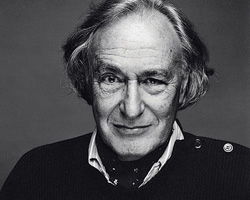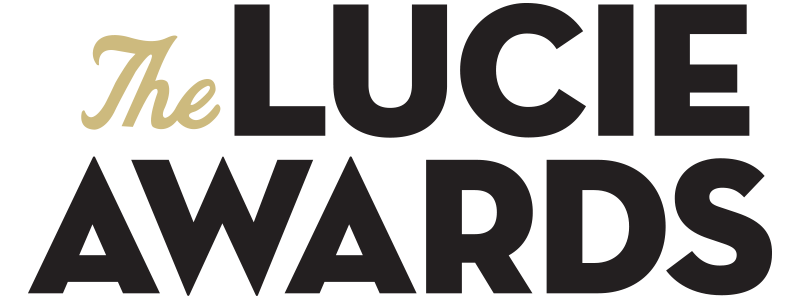
William Klein
2005 Honoree / Lifetime Achievement Award
Photographer, painter, filmmaker and graphic designer William Klein is one of the most controversial and influential artists of the twentieth century. Klein’s 1956 ground-breaking book, Life Is Good and Good For You in New York, captured the city’s chaos and urban madness with his explosive, iconoclastic vision. Klein’s black, Dada humor and method of taking pictures broke conventional rules as he experimented with flash, wide angles, confrontational close-ups, instinctive grab shots and harsh printing methods. In 1955 he began a relationship with Vogue magazine, which would last ten years, creating a new aesthetic combining graphic, satiric style with the absurd.
William Klein was born in 1928 and grew up on the Upper West Side of New York. He graduated from City College at the age of eighteen and then served in the U.S. Army in Europe, for two years which included one year at the Sorbonne. He settled in Paris, where he has lived ever since, and began his career as a painter. Klein studied briefly with Fernand Leger, and was doing hard-edge, geometric painting and graphic design before he began experimenting with photography.
Alexander Liberman, the legendary art director of Vogue, saw Klein’s early abstract photographs in Paris and offered him a contract for special projects in the magazine, as well as financed photographs for a New York portfolio. In 1954, Klein returned to New York and created a photographic diary of his experiences in the city. Still very new to the medium, he developed a technique without formal boundaries using wide angle lenses, blur, grain, high contrast, cock-eyed framing, and other techniques which gave his work a dynamic intensity that has never been matched. Unable to find a publisher in this country, his book Life is Good and Good For You in New York: Trance Witness Revels was published in France in 1956. It won the Prix Nadar and became a legend in this country for its radical photography and innovative design.
In the years following, Klein completed other major photographic books: Rome, 1956; Moscow, 1961; and Tokyo, 1962. To finance his personal work, he published fashion photographs for Vogue in 1955-65, which were so inventive that they transformed the field of fashion photography. In 1958, Klein made Broadway By Light, probably the first Pop Art film. This was the beginning of his remarkable career in film which continues to the present and includes: Muhammad Ali The Greatest, 1964-74; Who Are You, Polly Maggoo?, 1966; Far From Vietnam, 1967; Mister Freedom, 1968; The Panafrican Festival, 1969, Eldridge Cleaver, Black Panther, 1970 The Model Couple, 1976; The Little Richard Story, 1980; Mode in France, 1986; and In and Out of Fashion, 1993 among others. In 1999 Klein completed his most recent film, Messiah.
William Klein temporarily abandoned still photography for more than 10 years while working on his films, but he went back to photographic work in the 1980s. Since that time, he completed the books Close Up, 1989, Torino 90, 1990, In and Out of Fashion, 1994, New York 1954.55, 1995 (a re-worked edition of the 1956 book) and Films, 1999. Klein’s photographs have been widely exhibited in museums and galleries throughout Europe, Japan and the United States, and are included in major public and private collections throughout the world. Klein completed Surprising Paris, a 400- page book published in the beginning of 2002 in conjunction with major exhibitions at Maison Europienne de la Photographie and other European museums.
These exhibitions coincided with an exhibition of William Klein’s Large Painted Contacts at Charles Cowles Gallery in New York. The Painted Contacts is a continuing body of work based on a series of new imagery using his contact sheets with enamel paints in primary colors, creating artist variations of the photographers process of using grease pencil to indicate his selections. The result is an up-close exploration of the creative photographic process.
